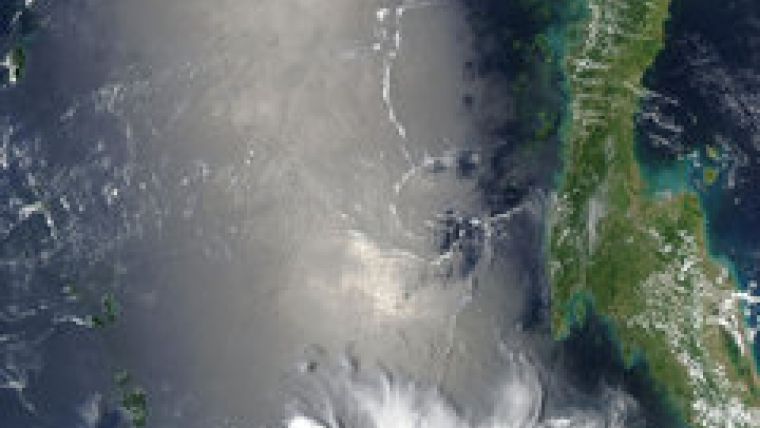Cool Deep Water Protects Coral Reefs against Heat Stress
Cool currents from the deep ocean could save tropical corals from lethal heat stress. Researchers from Alfred Wegener Institute, Helmholtz Centre for Polar and Marine Research, GEOMAR Helmholtz Centre for Ocean Research Kiel, Germany, and Phuket Marine Biological Center, Vietnam, observed internal waves preserving corals in the Andaman Sea. Because satellites do not detect these small-scale phenomena, local measurements are crucial for the establishment and monitoring of protected areas, the scientists point out in the January issue of the Proceedings of the Royal Society B.
In 1991, 1995, 2003, 2010...again and again, increased water temperatures have led to bleaching with fatal consequences for stony corals in the Andaman Sea. These animals are highly susceptible to changes in water temperatures. Even a small temperature rise damages the symbiotic algae living in a cell layer of the corals causing their expulsion by the coral host. The corals, which depend on the photosynthetic energy of their symbionts, are hardly able to survive without them. The rise in ocean temperatures and coral bleaching are considered as the greatest threats to coral reef ecosystems worldwide. Therefore, natural retreat areas where corals experience less stress or have become more resistant through physiological adaptations are investigated.
In 2010, the most massive coral bleaching so far has hit the Andaman Sea. In their study, the scientists analysed how the location of the reefs determined the extent of the damage: Locations that faced westwards benefitted from so-called large-amplitude internal waves (LAIW). In contrast to surface waves, LAIW travel along density gradients that separate the cold deep water from the warmer upper layer. Once they reach the continental shelf, internal waves may break and transport water from the deep to the shallow coral reefs. At reefs that were sheltered by islands, the heat stress was 40 to 80 per cent higher - with dramatic consequences.
In the Andaman Sea, internal waves can temporarily cool down the water temperature around coral reefs by up to ten degrees Celsius.
In the tropical Andaman See, internal waves are most pronounced during the dry northeast monsoon from January to March. In July and August, the monsoon blows from the southwest. It brings rain, mixes the ocean thoroughly and drives water towards the coasts - the coral reefs of the islands’ west flanks are then exposed to greater sedimentation. As part of their investigation, the biologists revealed differences between the data of the satellite monitoring of the US-American National Oceanic and Atmospheric Administration (NOAA) and in-situ work: only on-site measurements reflected the potential of internal waves.
Original publication:
Wall M., Putchim L., Schmidt G.M., Jantzen C., Khokiattiwong S., Richter C. (2015), Large-amplitude internal waves benefit corals during thermal stress. Proc. R. Soc. B 282, doi: 10.1098/rspb.2014.0650.
Image: Internal waves in the Andaman Sea, captured by the Moderate Resolution Imaging Spectroradiometer (MODIS) on the Aqua Satellite. Image courtesy: Jacques Descloitres, MODIS Rapid Response Team, NASA/GSFC.

Value staying current with hydrography?
Stay on the map with our expertly curated newsletters.
We provide educational insights, industry updates, and inspiring stories from the world of hydrography to help you learn, grow, and navigate your field with confidence. Don't miss out - subscribe today and ensure you're always informed, educated, and inspired by the latest in hydrographic technology and research.
Choose your newsletter(s)
























